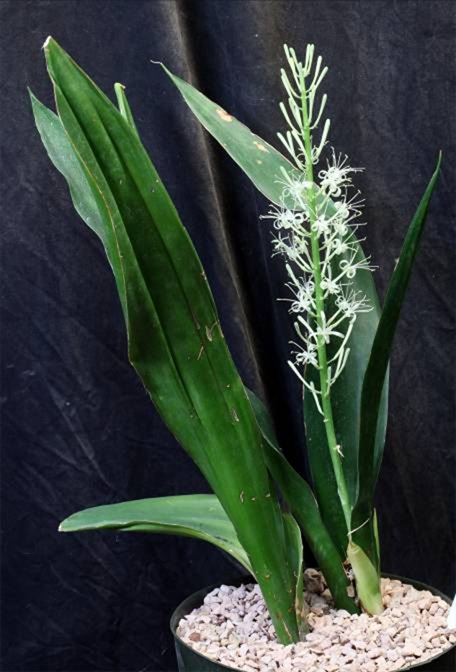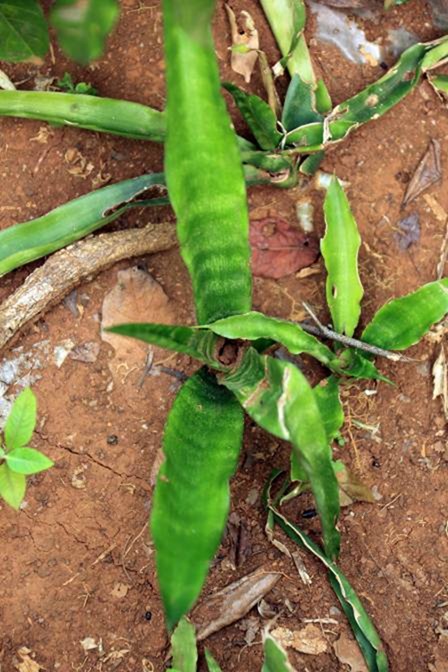| Protologue: |
Journal of the Linnean Society-Botany 14: 548 (1875). |
| Etymology: |
The epithet refers to the occurrence of this species near the Nile River. |
| |
Sansevieria nilotica Baker var. obscura N. E. Brown |
| Protologue: |
Bulletin of Miscellaneous Information, Kew 5: 238-239 (1915). |
| Etymology: |
The varietal epithet refers to the indistinct leaf markings. |
| Subgenus: |
Sansevieria |
| Group: |
Sansevieria dawei |
| Distribution: |
Uganda and the Sudan. |
| Brief Description of the Typical Species: |
This broad-leaf acaulescent and rhizomatous species has 2 - 3 smooth, lorate leaves that are 91-122 cm long and 2.5-5.7 cm wide. The leaves are narrowed gradually downward to a 3-6 cm channelled petiole, and the leaf faces are conspicuously marked with numerous closely placed irregular zigzag narrow bands of dark green and paler green. The tip is green and soft, and the margin is green as well. The inflorescence is 53-76 cm tall and simple with 4 - 10 flowers per cluster in the lower part and 2 - 3 flowers per cluster in the upper part. |
| Brief Description of Variety obscura: |
Variety obscura differs from the typical species with 4 - 5 lanceolate or lorate leaves that are 60-90 cm long and 1-1.3 cm wide and narrowed to a shorter channelled petiole. The leaves are a medium green color with a few inconspicuous slightly paler bands and a soft green tip. |
| Similar Species: |
Sansevieria nilotica is most closely related to Sansevieria dawei and other broad-leaf species from Uganda. It is unclear whether Sansevieria nilotica var. obscura deserves to remain at that rank or whether it is merely another form of the variable S. nilotica. |
| |
| |

Sansevieria nilotica flowering in cultivation.
|
| |

Sansevieria nilotica var. obscura at its type locality near Entebbe, Uganda. The characteristics of the plants at this locality do not appear to be outside the variability of the typical species.
|

